V301 General
V301.1 Scope
The provisions of Chapter 3 shall apply where required by Chapter 2 or where referenced by a requirement in this document.
V302 Deck Surfaces
V302.1 General
Deck surfaces shall be stable, firm, and slip resistant and shall comply with V302.
EXCEPTION
Areas of sport activity shall not be required to comply with V302.
Advisory V302.1 General. A stable surface is one that remains unchanged by contaminants or applied force, so that when the contaminant or force is removed, the surface returns to its original condition. A firm surface resists deformation by either indentations or particles moving on its surface. A slip-resistant surface provides sufficient frictional counterforce to the forces exerted in walking to permit safe ambulation.
V302.2 Carpet
Carpet or carpet tile shall be securely attached and shall have a firm cushion, or backing or no cushion. Carpet or carpet tile shall have a level loop, textured loop, level cut pile, or level cut/uncut pile texture. Pile height shall be ½ inch (13 mm) maximum. Exposed edges of carpet shall be fastened to deck surfaces and shall have trim on the entire length of the exposed edge. Carpet edge trim shall comply with V303.
Advisory V302.2 Carpet. Carpets and permanently affixed mats can significantly increase the amount of force (roll resistance) needed to propel a wheelchair over a surface. The firmer the carpeting and backing, the lower the roll resistance. A pile thickness up to ½ inch (13 mm) (measured to the backing, or cushion (e.g., padding) if no backing is provided) is allowed, although a lower pile provides easier wheelchair maneuvering. If a backing or cushion is used, it must be firm. Preferably, carpet cushion should not be used because the soft cushioning increases roll resistance.
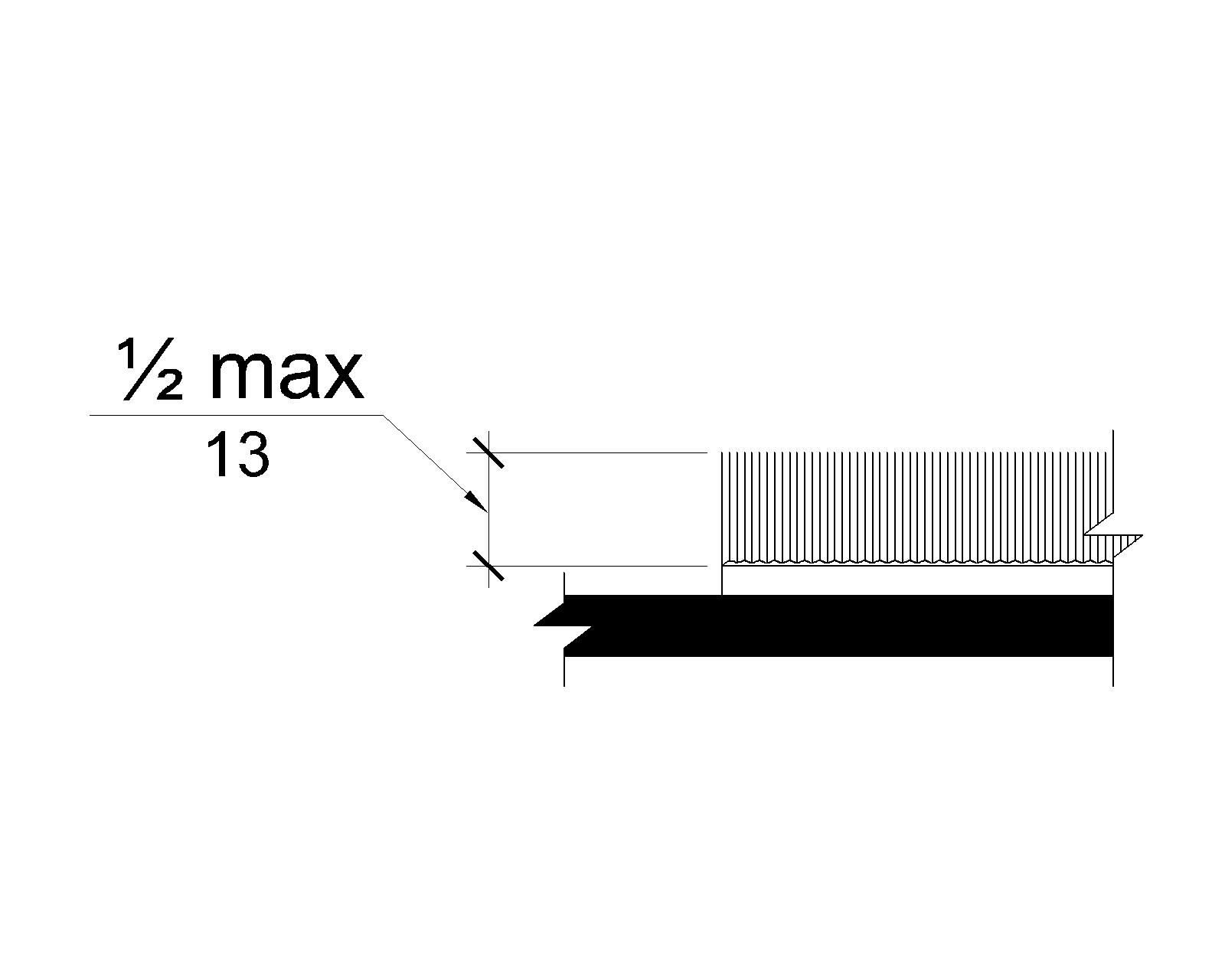
V302.3 Openings
Openings in deck surfaces shall not allow passage of a sphere more than ½ inch (13 mm) in diameter except as allowed in V407.4.3 and V409.4. Elongated openings shall be placed so that the long dimension is perpendicular to the dominant direction of travel.
EXCEPTIONS
- Vehicle tie-downs that are flush with the deck surface and are not located within an onboard accessible route shall not be required to comply with V302.3.
- Where the administrative authority determines that larger openings are needed for deck drainage, openings not located within an accessible route shall be permitted to be increased, if the size shall not allow passage of a sphere more than ¾ inch (19 mm) in diameter.
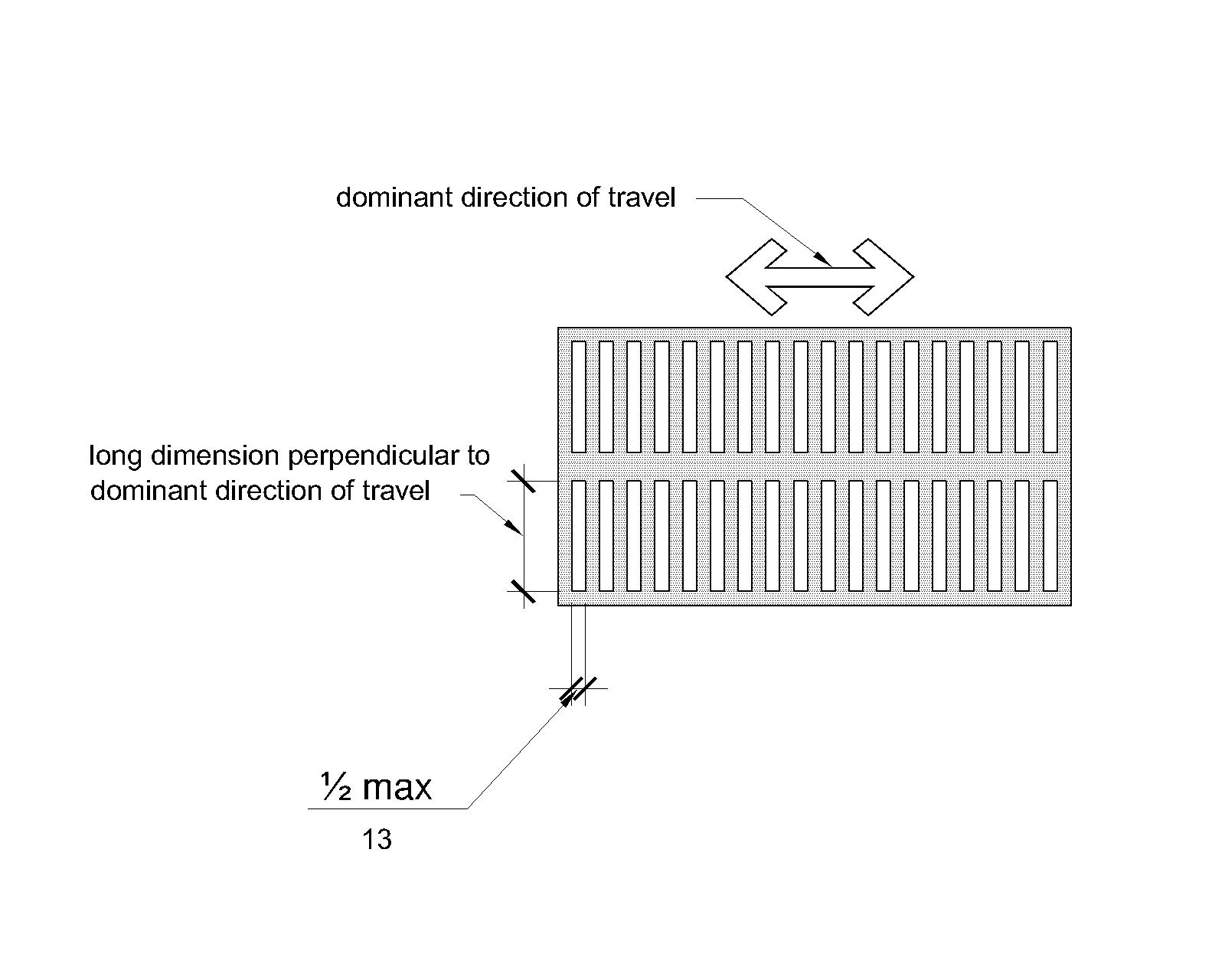
V303 Changes in Level
V303.1 General
Where changes in level are permitted in deck surfaces, they shall comply with V303.
EXCEPTIONS
- Areas of sport activity shall not be required to comply with V303.
- Vehicle tie-downs that are flush with the deck surface and are not located within an accessible route shall not be required to comply with V303.
V303.2 Vertical
Changes in level of ¼ inch (6.4 mm) high maximum shall be permitted to be vertical.
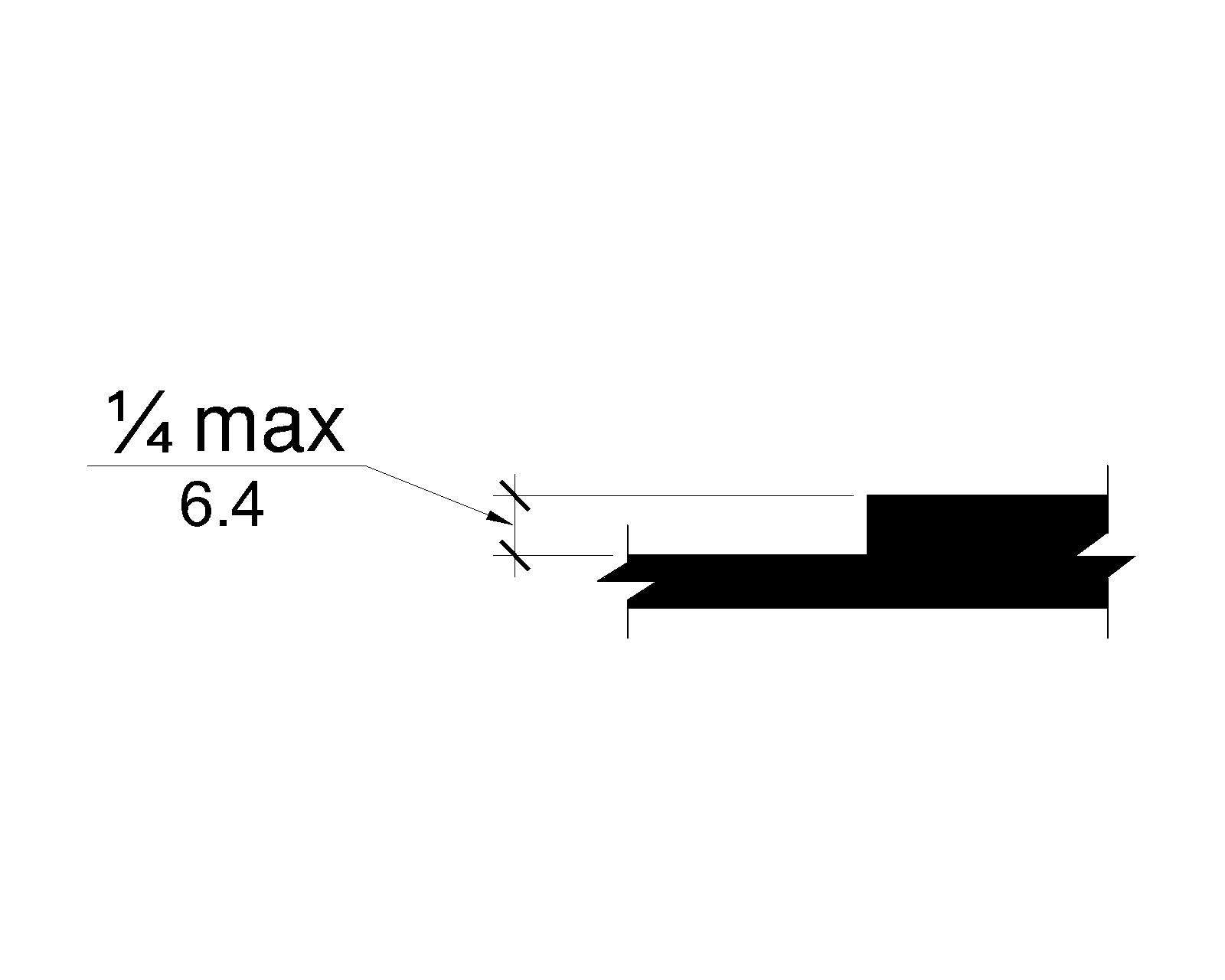
V303.3 Beveled
Changes in level between ¼ inch (6.4 mm) high minimum and ½ inch (13 mm) high maximum shall be beveled with a slope not steeper than 1:2.
Advisory V303.3 Beveled. A change in level of ½ inch (13 mm) is permitted to be ¼ inch (6.4 mm) vertical plus ¼ inch (6.4 mm) beveled. However, in no case may the combined change in level exceed ½ inch (13 mm). Changes in level exceeding ½ inch (13 mm) must comply with V405 (Ramps) or V406 (Curb Ramps).
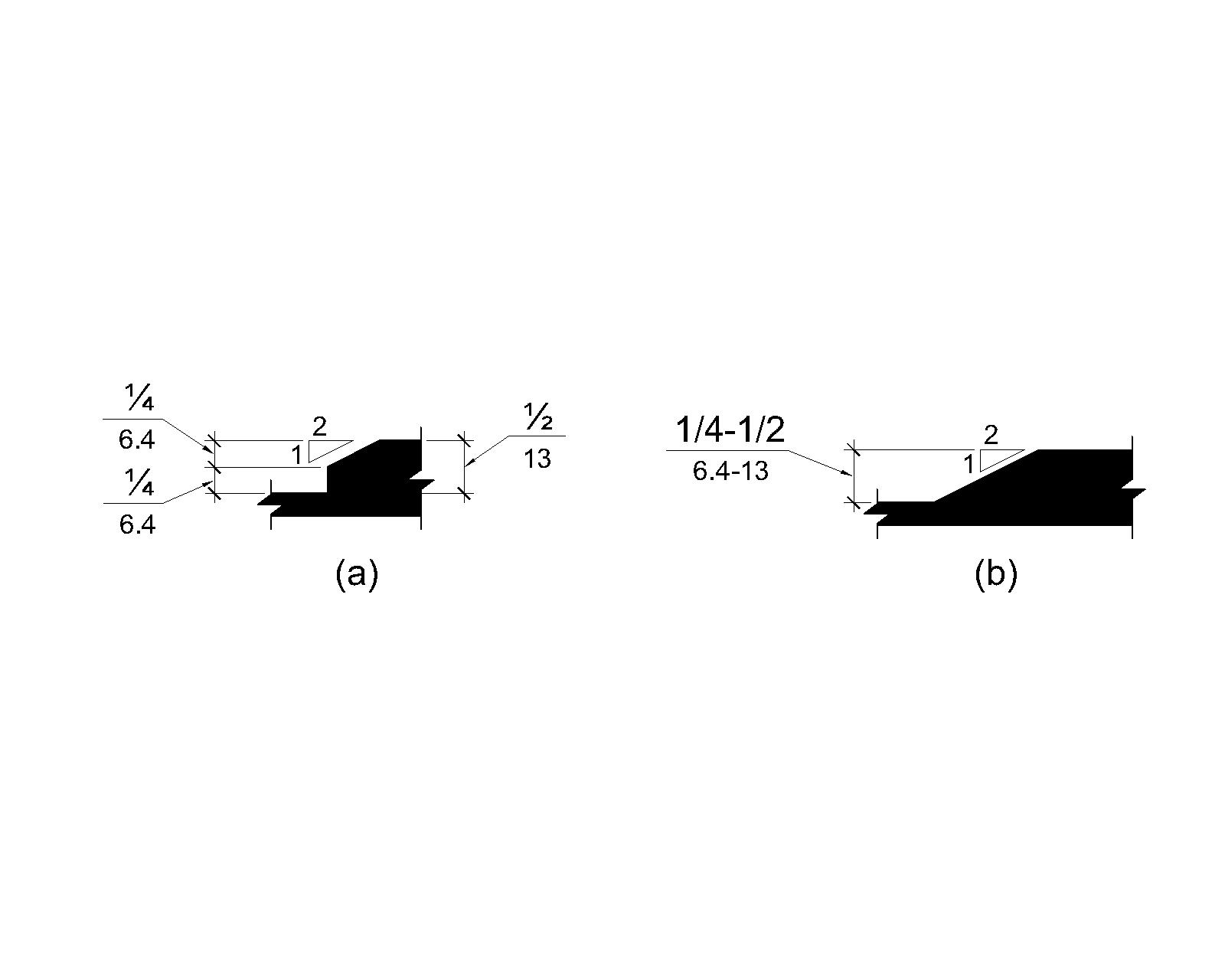
V303.4 Ramps
Changes in level greater than ½ inch (13 mm) high shall be ramped, and shall comply with V405 or V406.
V304 Turning Space
V304.1 General
Turning space shall comply with V304.
V304.2 Deck Surfaces
Deck surfaces of a turning space shall comply with V302. Changes in level are not permitted.
EXCEPTION
Slopes not steeper than 1:48 shall be permitted.
Advisory V304.2 Deck Surfaces Exception. As used in this section, the phrase “changes in level” refers to surfaces with slopes and to surfaces with an abrupt rise exceeding that permitted in Section V303.3. Such changes in level are prohibited in required clear deck spaces, turning spaces, and in similar spaces where people using wheelchairs and other mobility devices must park their mobility aids such as in wheelchair spaces, or maneuver to use elements such as at doors, fixtures, and telephones. The exception permits slopes not steeper than 1:48.
V304.3 Size
Turning space shall comply with V304.3.1 or V304.3.2.
V304.3.1 Circular Space
The turning space shall be a space of 60 inches (1525 mm) diameter minimum. The space shall be permitted to include knee and toe clearance complying with V306.
V304.3.2 T-Shaped Space
The turning space shall be a T-shaped space within a 60 inch (1525 mm) square minimum with arms and base 36 inches (915 mm) wide minimum. Each arm of the T shall be clear of obstructions 12 inches (305 mm) minimum in each direction and the base shall be clear of obstructions 24 inches (610 mm) minimum. The space shall be permitted to include knee and toe clearance complying with V306 only at the end of either the base or one arm.
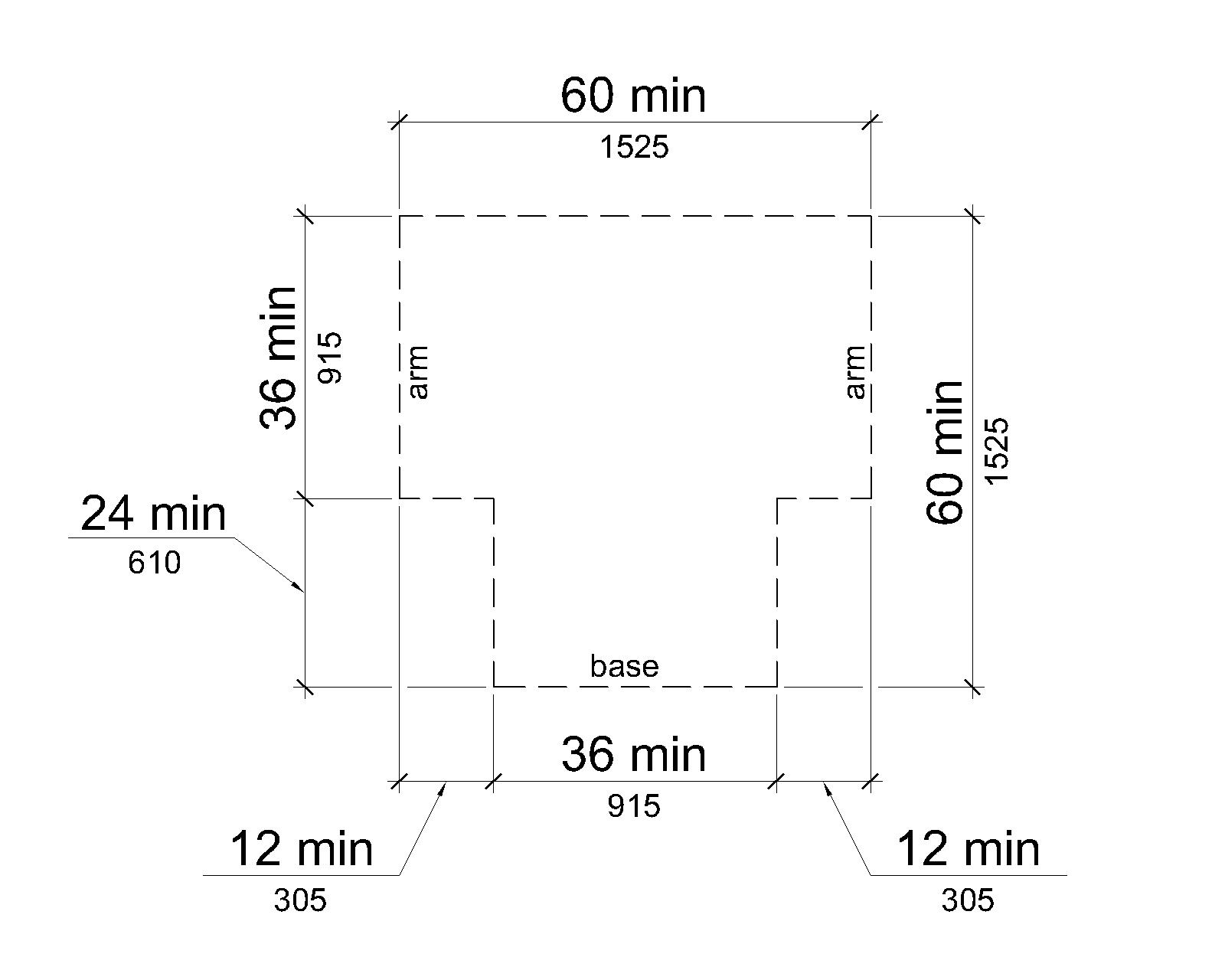
V304.4 Door Swing
Doors shall be permitted to swing into turning spaces.
V305 Clear Deck Space
V305.1 General
Clear deck space shall comply with V305.
V305.2 Deck Surfaces
Deck surfaces of a clear deck space shall comply with V302. Changes in level are not permitted.
EXCEPTION
Slopes not steeper than 1:48 shall be permitted.
V305.3 Size
The clear deck space shall be 30 inches (760 mm) minimum by 48 inches (1220 mm) minimum.
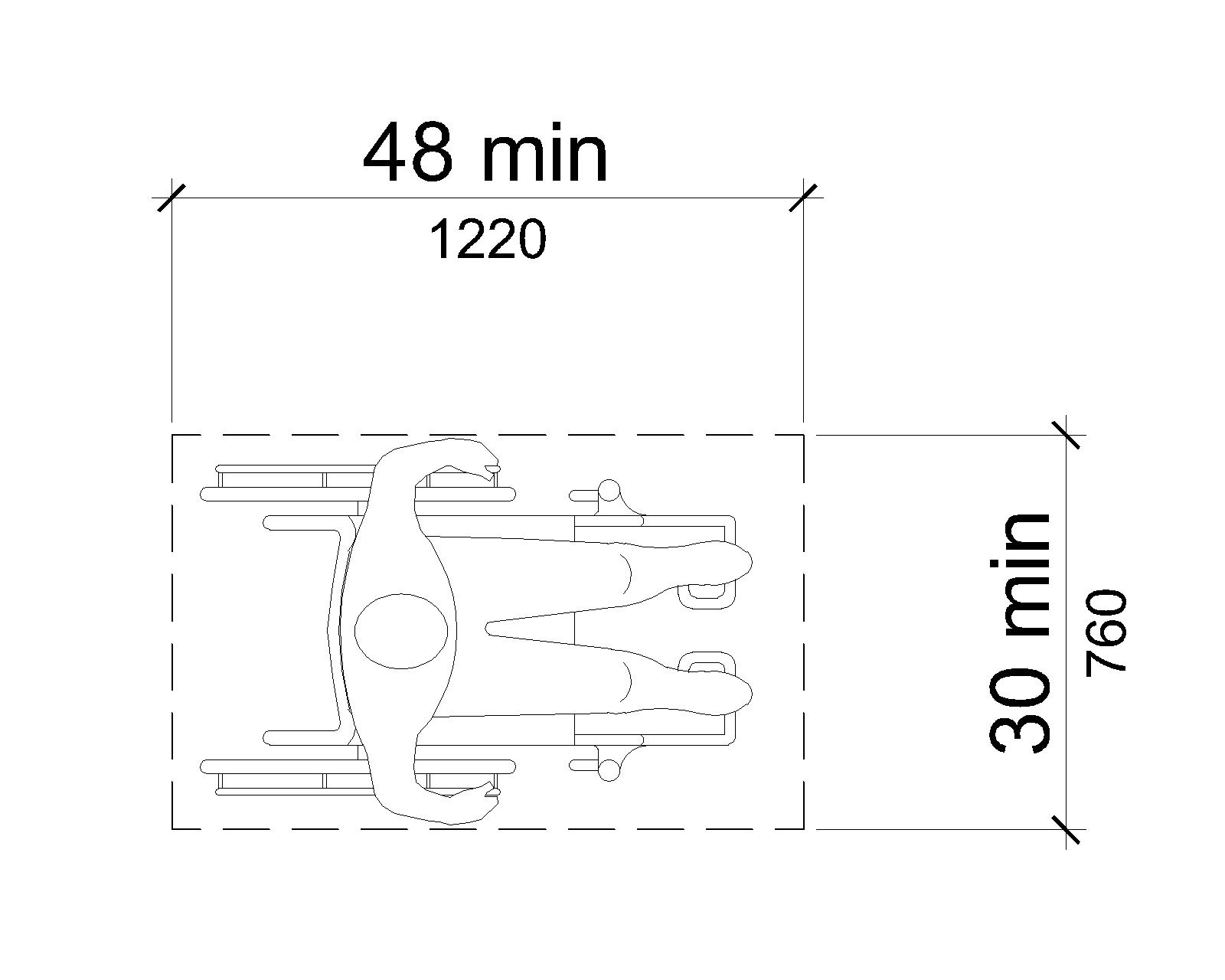
V305.4 Knee and Toe Clearance
Unless otherwise specified, clear deck space shall be permitted to include knee and toe clearance complying with V306.
V305.5 Position
Unless otherwise specified, clear deck space shall be positioned for either forward or parallel approach to an element.
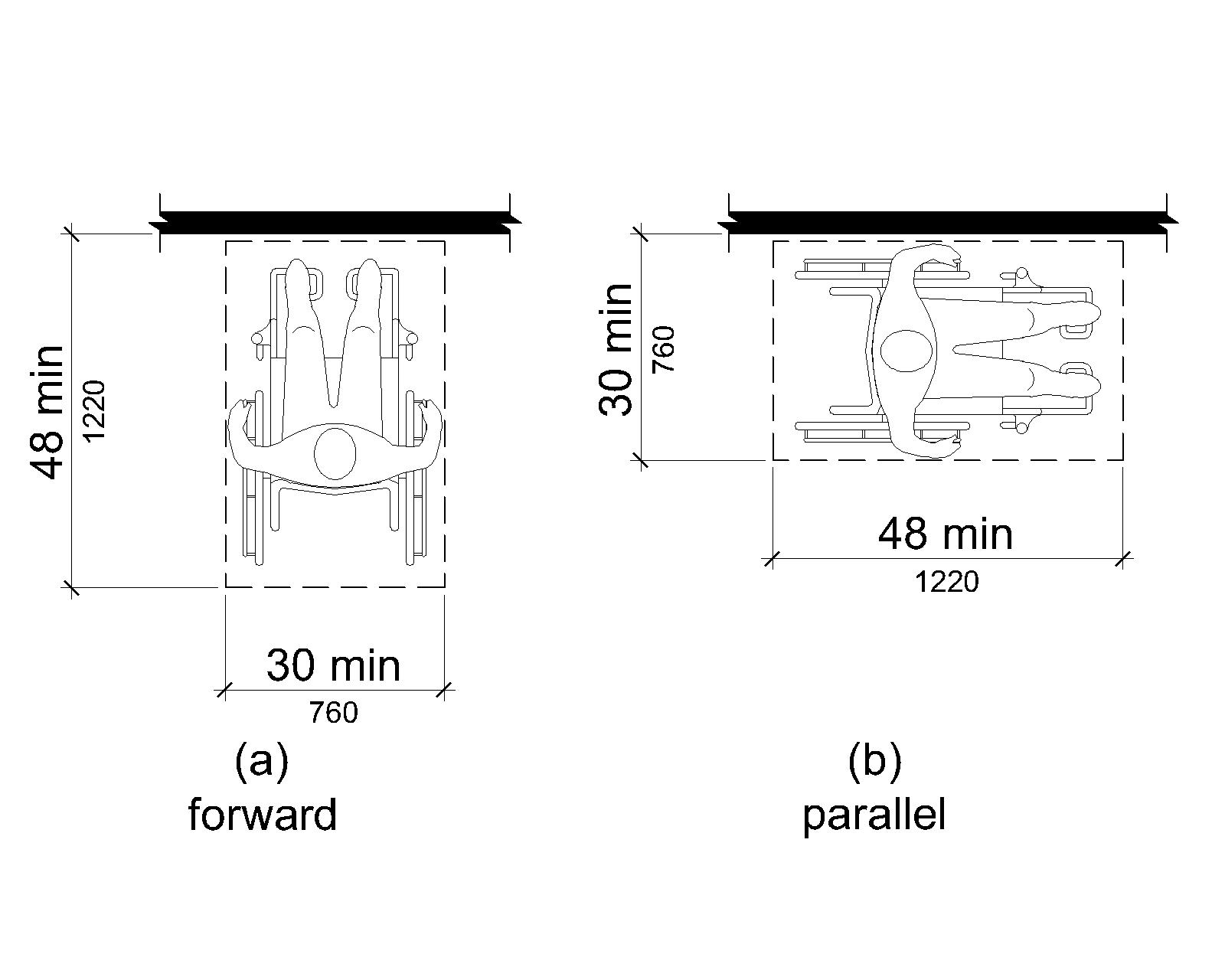
V305.6 Approach
One full unobstructed side of the clear deck space shall adjoin an accessible route or adjoin another clear deck space.
V305.7 Maneuvering Clearance
Where a clear deck space is confined on all or part of three sides, additional maneuvering clearance shall be provided in accordance with V305.7.
V305.7.1 Forward Approach
Where the clear deck space is approached at the short side, the space shall be 36 inches (915 mm) wide minimum where the depth of the confined clear deck space exceeds 24 inches (610 mm).
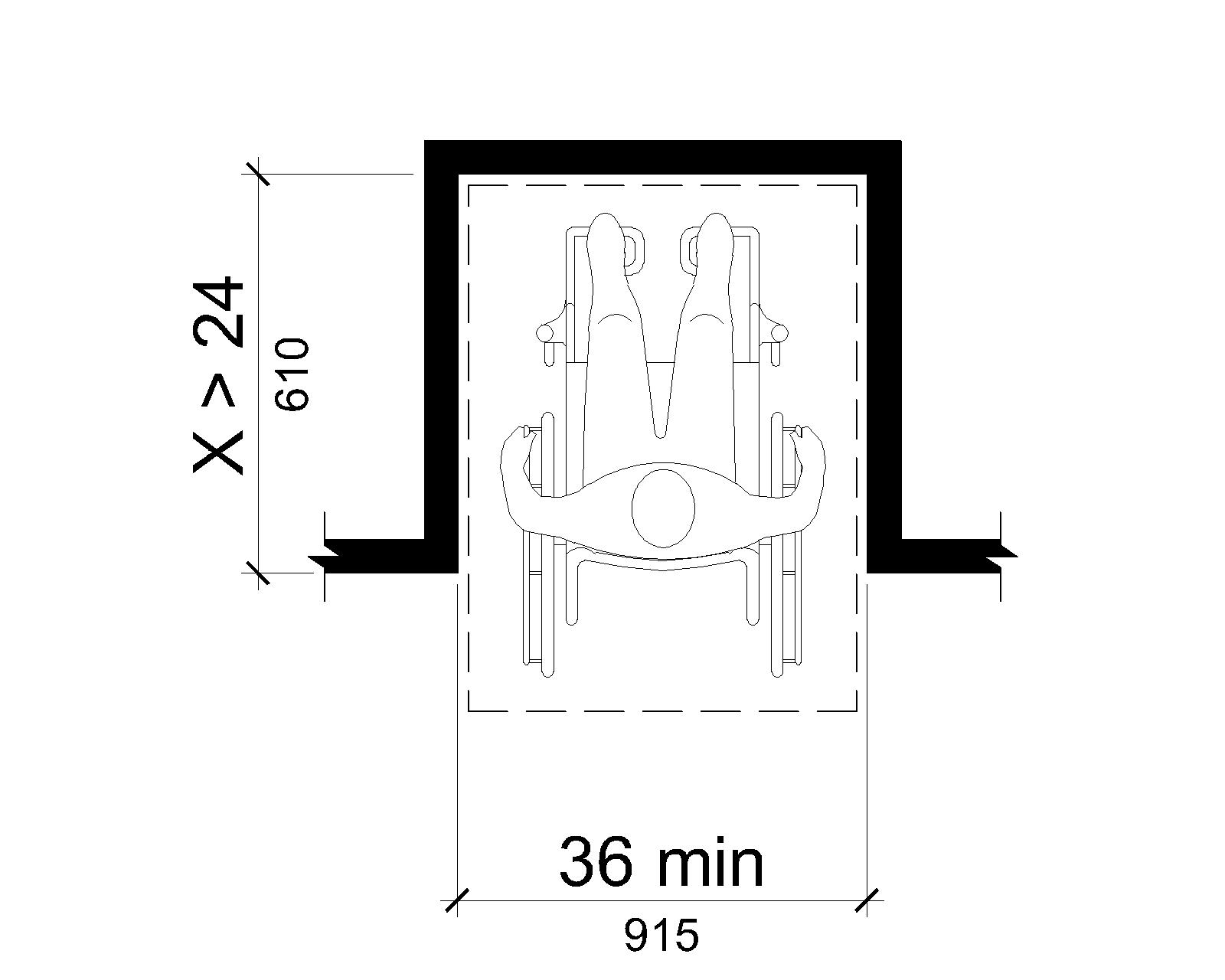
V305.7.2 Parallel Approach
Where the clear deck space is approached at the long side, the space shall be 60 inches (1525 mm) wide minimum where the depth of the confined clear deck space exceeds 15 inches (380 mm).
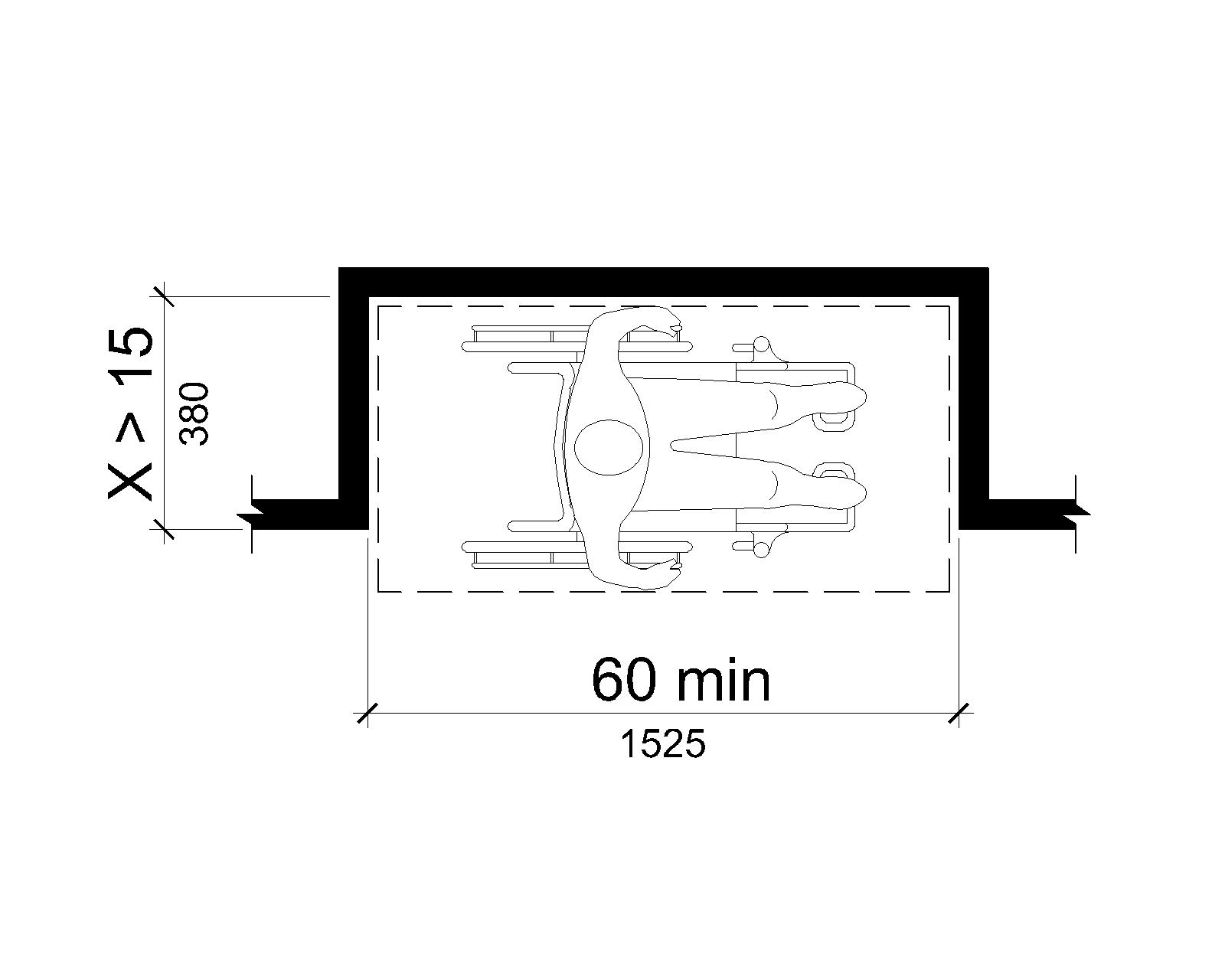
V306 Knee and Toe Clearance
V306.1 General
Where space beneath an element is included as part of clear deck space or turning space, the space shall comply with V306. Additional space shall not be prohibited beneath an element but shall not be considered as part of the clear deck space or turning space.
Advisory V306.1 General. Clearances are measured in relation to the usable clear deck space, not necessarily to the vertical support for an element. When determining clearance under an object for required turning or maneuvering space, care should be taken to ensure the space is clear of any obstructions.
V306.2 Toe Clearance.
V306.2.1 General
Space under an element between the finish deck surface and 9 inches (230 mm) above the finish deck surface shall be considered toe clearance and shall comply with V306.2.
V306.2.2 Maximum Depth
Toe clearance shall extend 25 inches (635 mm) maximum under an element.
V306.2.3 Minimum Required Depth
Where toe clearance is required at an element as part of a clear deck space, the toe clearance shall extend 17 inches (430 mm) minimum under the element.
V306.2.4 Additional Clearance
Space extending greater than 6 inches (150 mm) beyond the available knee clearance at 9 inches (230 mm) above the finish deck surface shall not be considered toe clearance.
V306.2.5 Width
Toe clearance shall be 30 inches (760 mm) wide minimum.
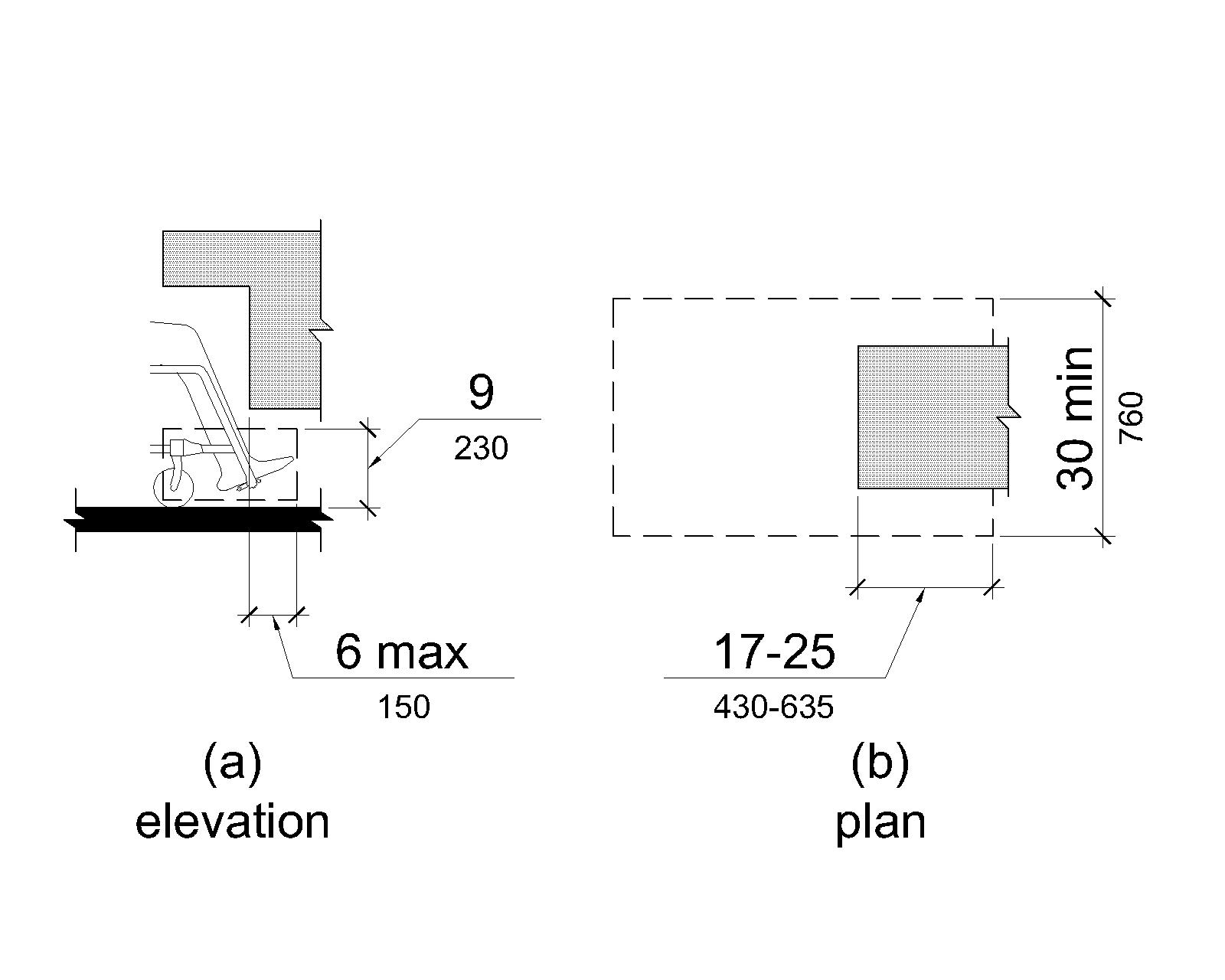
V306.3 Knee Clearance.
V306.3.1 General
Space under an element between 9 inches (230 mm) and 27 inches (685 mm) above the finish deck surface shall be considered knee clearance and shall comply with V306.3.
V306.3.2 Maximum Depth
Knee clearance shall extend 25 inches (635 mm) maximum under an element at 9 inches (230 mm) above the finish deck surface.
V306.3.3 Minimum Required Depth
Where knee clearance is required under an element as part of a clear deck space, the knee clearance shall be 11 inches (280 mm) deep minimum at 9 inches (230 mm) above the finish deck surface, and 8 inches (205 mm) deep minimum at 27 inches (685 mm) above the finish deck surface.
V306.3.4 Clearance Reduction
Between 9 inches (230 mm) and 27 inches (685 mm) above the finish deck surface, the knee clearance shall be permitted to reduce at a rate of 1 inch (25 mm) in depth for each 6 inches (150 mm) in height.
V306.3.5 Width
Knee clearance shall be 30 inches (760 mm) wide minimum.
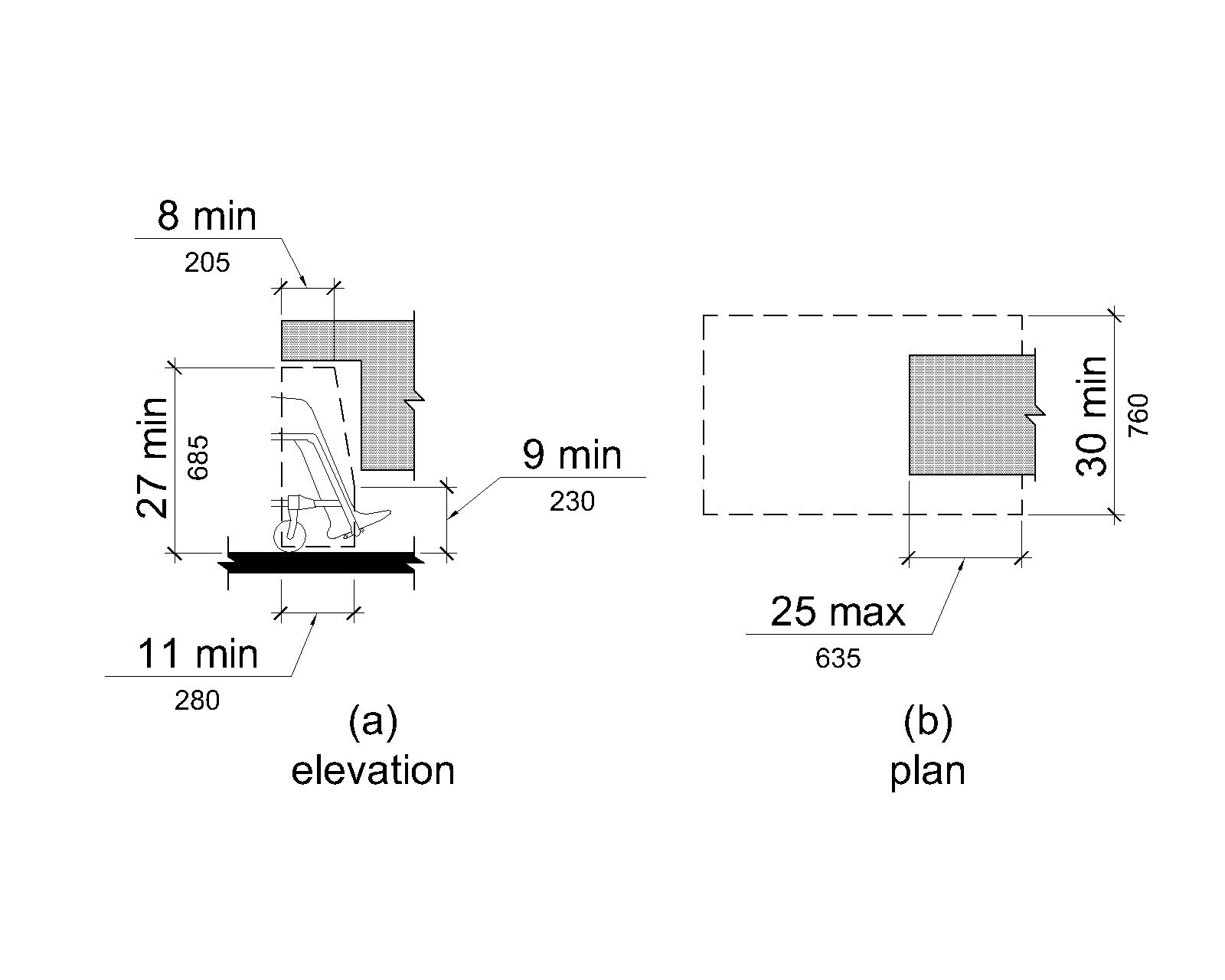
V307 Protruding Objects
V307.1 General
Protruding objects shall comply with V307.
V307.2 Protrusion Limits
Objects with leading edges more than 27 inches (685 mm) and not more than 80 inches (2030 mm) above the finish deck surface shall protrude 4 inches (100 mm) maximum horizontally into the circulation path.
EXCEPTION
Handrails shall be permitted to protrude 4½ inches (115 mm) maximum.
Advisory V307.2 Protrusion Limits. When a cane is used and the element is in the detectable range, it gives a person sufficient time to detect the element with the cane before there is body contact. Elements located on circulation paths, including operable elements, must comply with requirements for protruding objects. For example, awnings and their supporting structures cannot reduce the minimum required vertical clearance.
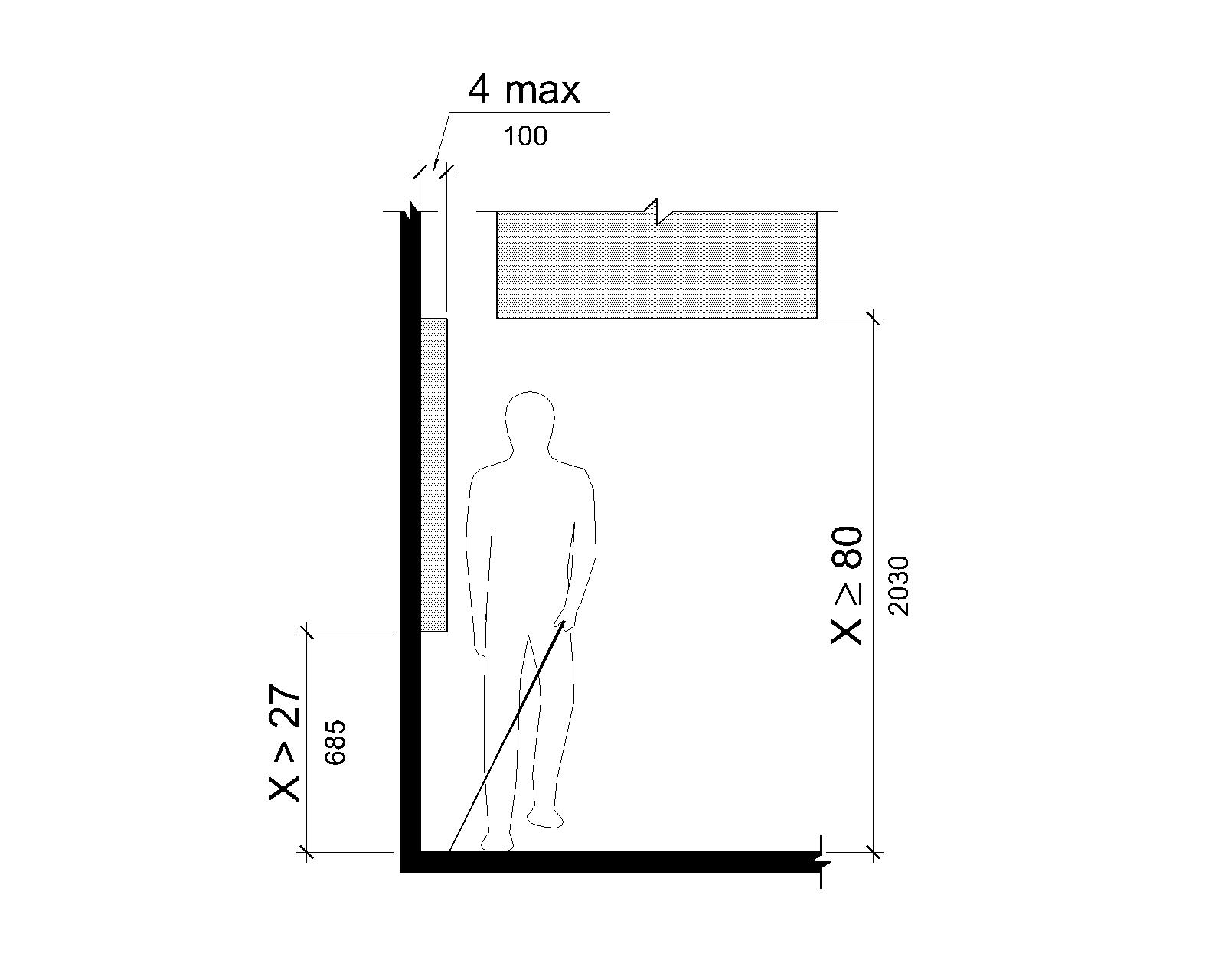
V307.3 Required Clear Width
Protruding objects shall not reduce the clear width required for onboard accessible routes.
V307.4 Vertical Clearance
Vertical clearance shall be 80 inches (2030 mm) high minimum. Guardrails or other barriers shall be provided where the vertical clearance is less than 80 inches (2030 mm) high. The leading edge of such guardrail or barrier shall be located 27 inches (685 mm) maximum above the finish deck surface.
EXCEPTIONS
- Door closers and door stops shall be permitted to be 78 inches (1980 mm) minimum above the finish deck surface.
- Where doors are required by the administrative authority to have coamings, measurements shall be permitted to be taken from the finish deck surface adjacent to the coamings and not the top of the coamings.
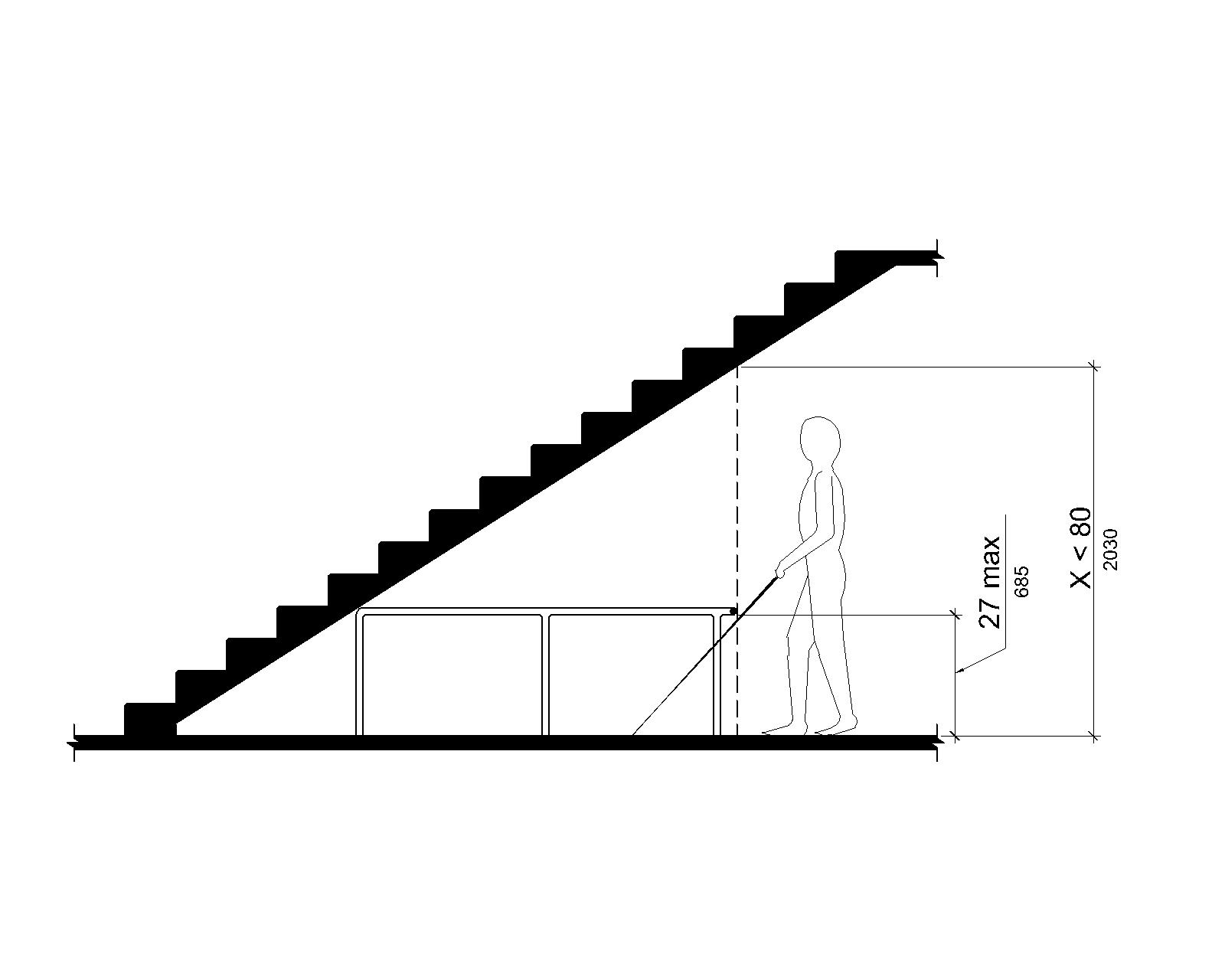
V308 Reach Ranges
V308.1 General
Reach ranges shall comply with V308.
Advisory V308.1 General. The following table provides guidance on reach ranges for children according to age where vessel elements such as coat hooks, lockers, or operable parts are designed for use primarily by children. These dimensions apply to either forward or side reaches. Accessible elements and operable parts designed for adult use or children over age 12 can be located outside these ranges but must be within the adult reach ranges required by V308.
| Forward or Side Reach | Ages 3 and 4 | Ages 5 through 8 | Ages 9 through 12 |
|---|---|---|---|
| High (maximum) | 36 in (915 mm) | 40 in (1015 mm) | 44 in (1120 mm) |
| Low (minimum) | 20 in (510 mm) | 18 in (455 mm) | 16 in (405 mm) |
V308.2 Forward Reach
V308.2.1 Unobstructed
Where a forward reach is unobstructed, the high forward reach shall be 48 inches (1220 mm) maximum and the low forward reach shall be 15 inches (380 mm) minimum above the finish deck surface.
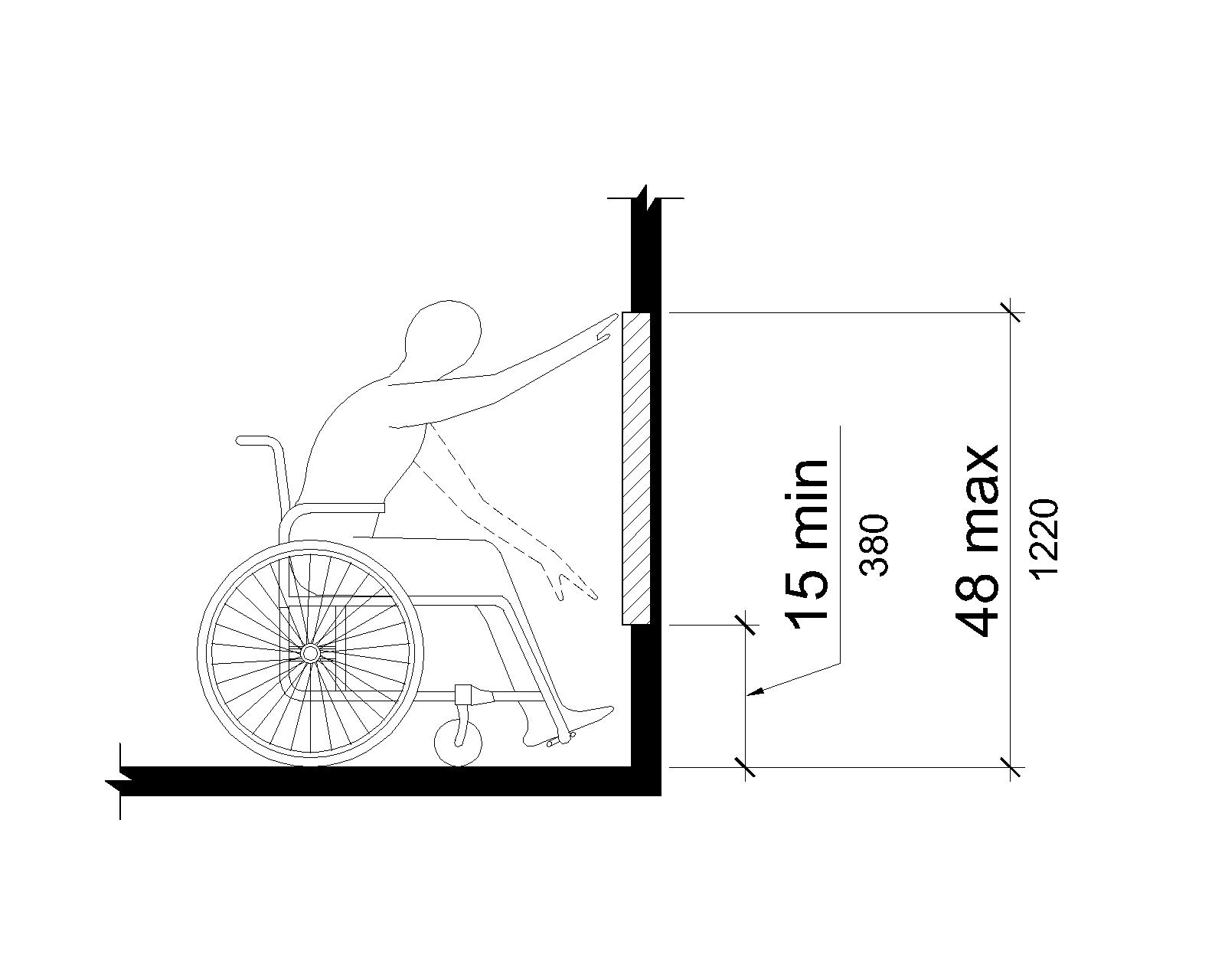
V308.2.2 Obstructed High Reach
Where a high forward reach is over an obstruction, the clear deck space shall extend beneath the element for a distance not less than the required reach depth over the obstruction. The high forward reach shall be 48 inches (1220 mm) maximum where the reach depth is 20 inches (510 mm) maximum. Where the reach depth exceeds 20 inches (510 mm), the high forward reach shall be 44 inches (1120 mm) maximum and the reach depth shall be 25 inches (635 mm) maximum.
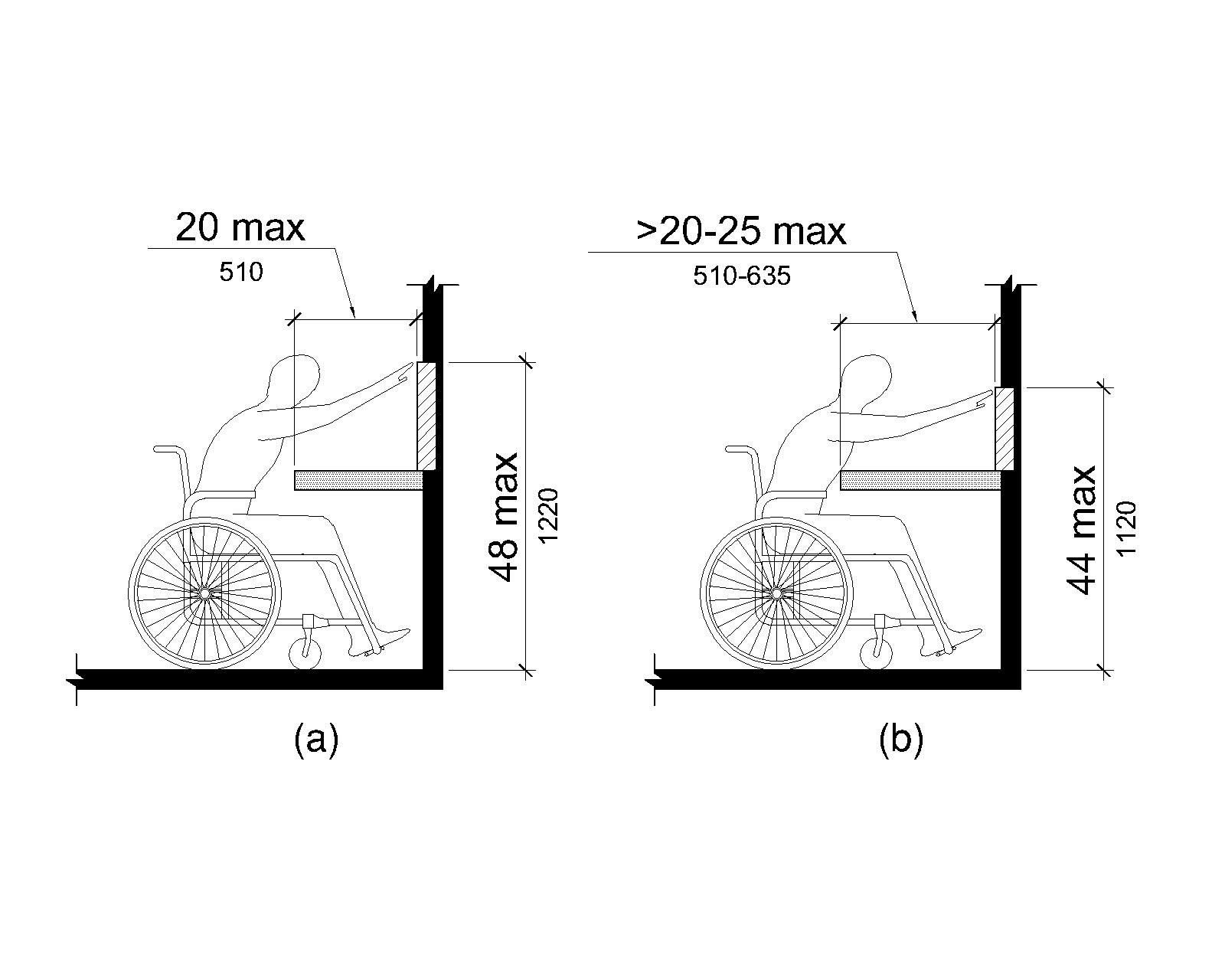
V308.3 Side Reach
V308.3.1 Unobstructed
Where a clear deck space allows a parallel approach to an element and the side reach is unobstructed, the high side reach shall be 48 inches (1220 mm) maximum and the low side reach shall be 15 inches (380 mm) minimum above the finish deck surface.
EXCEPTION
An obstruction shall be permitted between the clear deck space and the element where the depth of the obstruction is 10 inches (255 mm) maximum.
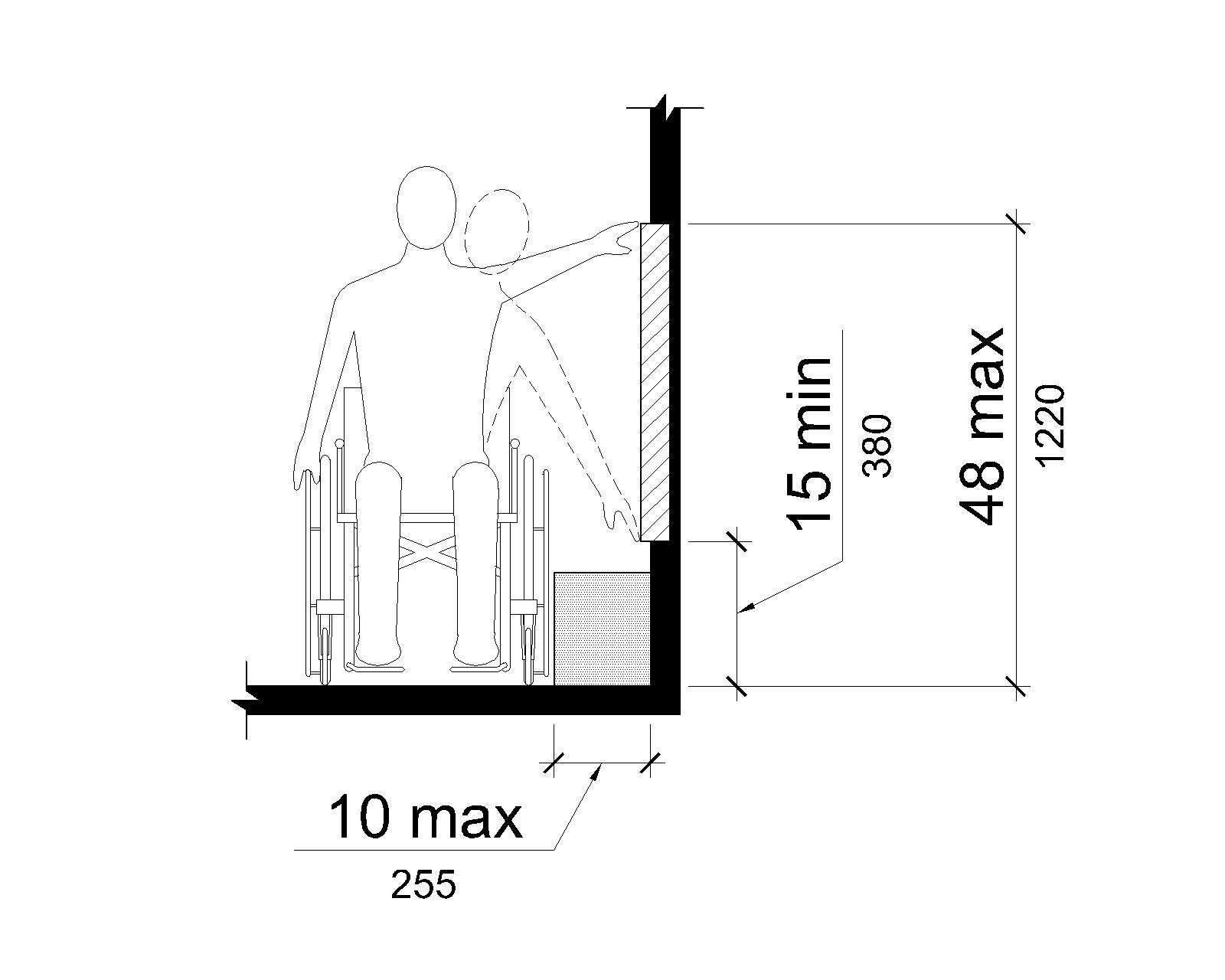
V308.3.2 Obstructed High Reach
Where a clear deck space allows a parallel approach to an element and the high side reach is over an obstruction, the height of the obstruction shall be 34 inches (865 mm) maximum and the depth of the obstruction shall be 24 inches (610 mm) maximum. The high side reach shall be 48 inches (1220 mm) maximum for a reach depth of 10 inches (255 mm) maximum. Where the reach depth exceeds 10 inches (255 mm), the high side reach shall be 46 inches (1170 mm) maximum for a reach depth of 24 inches (610 mm) maximum.
EXCEPTION
The top of washing machines and clothes dryers shall be permitted to be 36 inches (915 mm) maximum above the finish deck surface.
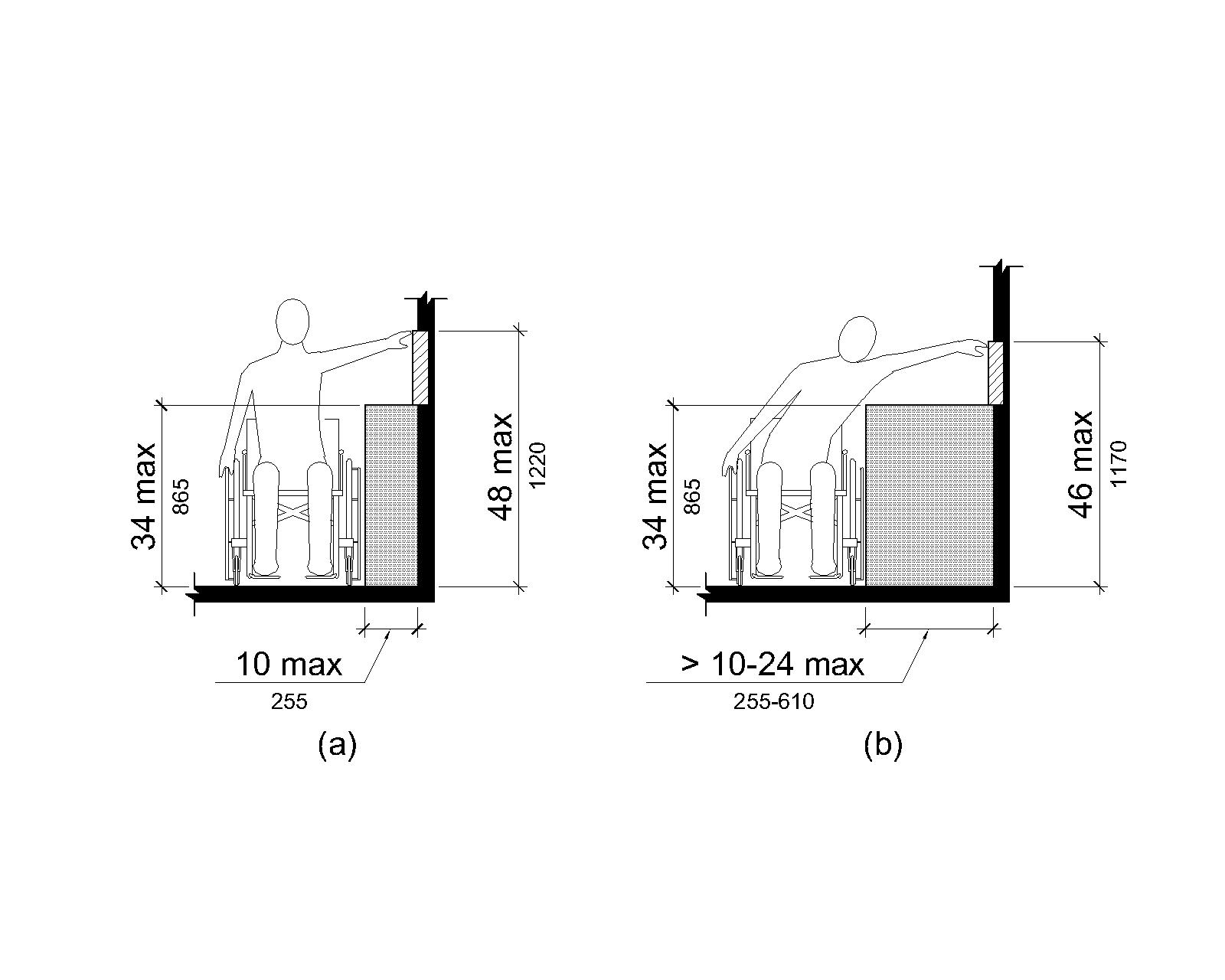
V309 Operable Parts
V309.1 General
Operable parts shall comply with V309.
V309.2 Clear Deck Space
A clear deck space complying with V305 shall be provided.
V309.3 Height
Operable parts shall be placed within one or more of the reach ranges specified in V308.
V309.4 Operation
Operable parts shall be operable with one hand and shall not require tight grasping, pinching, or twisting of the wrist. The force required to activate operable parts shall be 5 pounds (22.2 N) maximum.



